Navojoa, Sonora 作者: 来源: 发布时间:2021-11-19
1.Population and Area
Pop: 103,312 (city)
Area: 4,380.69 km2 (city)
Elev: 50 masl
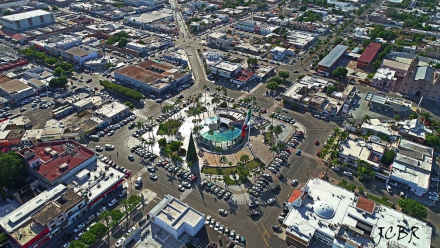
2. Natural geography
Nature and weather
Flora and fauna
In this municipality there is a combination of different species of vegetation with varieties of grassland combined with bushes. Among the main components are the white torote, red torote, donkey grass, governor, ironwood, candelilla, also including the so-called cardonal groups such as organs, candelabra and garambullo. Also noteworthy in this municipality are the areas dedicated to irrigated agriculture, including the so-called partial irrigation.
The wildlife of this municipality is varied, including: toad, nymph, bull toad, desert tortoise, desert chameleon, huico, cachora (worldwide known as lizard), lynx, coyote, wild boar, hare, rabbit, opossum (opossum), squirrel, short-tailed dove, purple pigeon, duck, tick, chuparrosa, matraquita, chicks.
Köppen Classification: Mid-Latitude Steppe and Desert Climate
This climate type is characterized by extremely variable temperature conditions, with annual means decreasing and annual ranges increasing poleward, and relatively little precipitation. This climate is typically located deep within the interiors of continents and is contiguous with the tropical desert climates of North and South America and of central Asia. This region type owes its origins to locations deep within continental interiors, far from the windward coasts and sources of moist, maritime air. Remoteness from sources of water vapor is enhanced in some regions by mountain barriers upwind.
The Köppen Climate Classification subtype for this climate is "Bsh". (Mid-Latitude Steppe and Desert Climate).
The average temperature for the year in Navojoa is 77.5°F (25.3°C). The warmest month, on average, is July with an average temperature of 89.4°F (31.9°C). The coolest month on average is January, with an average temperature of 64.8°F (18.2°C).
The highest recorded temperature in Navojoa is 118.4°F (48°C), which was recorded in June. The lowest recorded temperature in Navojoa is 25.7°F (-3.5°C), which was recorded in January.
The average amount of precipitation for the year in Navojoa is 15.9" (403.9 mm). The month with the most precipitation on average is August with 4.2" (106.7 mm) of precipitation. The month with the least precipitation on average is May with an average of 0.0" (0 mm). In terms of liquid precipitation, there are an average of 37.4 days of rain, with the most rain occurring in August with 9.6 days of rain, and the least rain occurring in May with 0.2 days of rain.
http://www.weatherbase.com/weather/weather-summary.php3?s=116267&cityname=Navojoa%2C+Sonora%2C+Mexico&units=
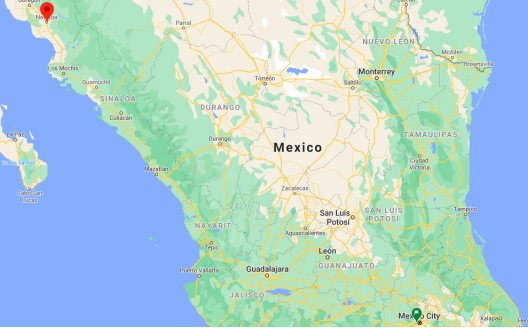
Getting there and around
Get there
By plane – The cheapest way to get from Mexico City to Navojoa is to fly (to los Mochis) and bus which costs $1100 - $4200 and takes 9h 26m. Also, the quickest way to get from Mexico City to Navojoa is to fly (to Ciudad Obregón) and bus which costs $2400 - $7000 and takes 5h 23m. The quickest flight from Mexico City Airport to Ciudad Obregon Airport is the direct flight which takes 2h 30m.
By car – The distance between Mexico City and Navojoa is 1353 km. The road distance is 1562.2 km. It takes approximately 14h 45m to drive from Mexico City to Los Mochis.
By bus – The best way to get from Mexico City to Navojoa without a car is to bus via Los Mochis which takes 20h 11m and costs $1400 - $2500. There are services departing from La Raza metro station and arriving at Navojoa via Mexico City Norte. The journey, including transfers, takes approximately 24h 38m.
https://www.rome2rio.com/s/Mexico-City/Navojoa
Rideshare – Check out Blabla Car's carpooling service for rideshare options between Mexico City and the city you are visiting. A great option if you don't have a driver's license or want to avoid public transport.
Car Rental – To explore Mexico’s provincial towns and cities—including its beach locations and the scenery and attractions near them— consider renting a car for your visit. Having your own car will give you more flexibility than using public transport options and, in some cases, offer you access to places which are otherwise difficult to visit without the use of a car.
COVID19 – International entry into Mexico from United States
Allowed for: All visitors arriving by air. Mexico land borders are closed to non-essential travel
Restricted for: There are no current restrictions.
Get around
Local Buses – Local buses and mini-buses (combis or micros) are available locally for a fraction of the cost of a taxi around town. You need to speak Spanish to be able to ask for directions or ask the driver to tell you where to get off.
Taxis – Taxis in most of Mexico’s towns and cities are not metered, so agree your price before you get in. Taxi travel is very affordable in Mexico, in comparison to the USA, Canada and Europe, and so provides a viable means of public transportation in Mexico. Your hotel can arrange taxis for you; some post their rates on a board in the lobby; taxi hotel rates are usually higher than cabs you hail off the street. If you speak Spanish, you will have a distinct advantage and be able to negotiate a price with the driver.
Uber is expanding rapidly across Mexico and now offers services in cities across the country, including: Mexico City, Toluca, Cuernavaca, Puebla, Querétaro, León, Aguascalientes, San Luis Potosí, Guadalajara, Monterrey, Hermosillo, Tijuana, Mexicali, and Mérida. Uber has been adding Mexican cities to its network every year, check for availability when you arrive at your destination in Mexico.
Cabify and Didi are also developing and currently operate in cities including Mexico City, Toluca, Monterrey, Puebla, Querétaro and Tijuana. Check for availability in the city you are visiting.
These services offer people with smartphones a way to book a cab through a mobile app for a pre-agreed price. Fares are comparable with Sitio type cabs, and sometimes trade at a premium to this when local demand increases.
https://www.mexperience.com/transport/taxi-travel-in-mexico/#51
3. ECONOMY
GDP: 13,173 M MXN (2010)
https://imco.org.mx/ciudades2010/ciudades/79_Navojoa.html
4. Industry characteristics
Farming
Agriculture in the municipality is important not only for production volumes, but also for the creation of jobs and the value generated to the municipal domestic product. The Navojoan countryside has irrigation infrastructure, roads and highways, an agricultural research center and all the necessary elements to diversify the market-oriented pattern of crops, which is increasingly open.
Navojoa has an irrigated agricultural area of 116,000 hectares, which represents 26% of the area of the municipality. This area is dedicated to the production of grains and oilseeds, highlighting wheat, corn and soybeans, whose joint contribution to total production amounts to 87% of the area; while, the rest of the surface is used mainly in the production of vegetables and a minimum amount for fruit trees.
Cattle raising
Livestock ranks second municipally among the activities of the primary sector. This activity is focused on swine, poultry and cattle, according to the following production volumes:
40,252 tons of pork
27,564 tons of poultry meat
1,136 tons of beef cattle (1993)
The local swine industry is characterized by having an important participation at the state level, representing 45% in meat production and 27% in number of heads.
Regarding bovine cattle, there are 32,519 heads in an area of 219,858 hectares of pasture with a coefficient of 34 hectares per animal unit. This activity has been affected, among other factors, by periods of drought, high financial costs, as well as the increase in grain prices in the case of feeding cattle.
Livestock activity, despite its difficulties in recent years, has acquired an integrating dynamism of great importance, especially pig farming, in relation to the production of balanced food for animal consumption, and the processing of meat and sausages, thus manifesting a great advance and recognition not only nationally but internationally, for the degree of quality and competitiveness of its products.
Industry
This activity ranks second in the generation of jobs and the employed population, since only in 1995 it generated 1,145 jobs.
In recent years the industry has played an important role in the municipality, there are companies dedicated to the Extraction of Vegetable Oils, Wheat Milling, Beer Production, Traces, Plaster, Cardboard Packaging, Guitar Manufacturing, Alarm Manufacturing and Harnesses .
The micro, small and medium industries maintain an important presence with 296 establishments, highlighting those that are dedicated to the production of food, beverages, tobacco, wood, paper and non-metallic mineral products.
Business and services
The municipal seat has maintained commercial and service development, both public and private, largely meeting the needs of the surrounding municipalities. This development has generated, together with the services sector, 17,423 jobs, becoming a very important activity for the economy of the Municipality.
Currently there are 1,585 commercial and service establishments, where 70% of the economically active population working in the tertiary sector of the municipality is employed.
Key project: Photovoltaic solar plant
This photovoltaic solar project consists of 40 sub-installations and a power of 250 MW. It has a total of 674,859 polycrystalline photovoltaic modules in 2V configuration. In addition to 2,115 investors and 7,754 followers. Thanks to the transformation centers, the energy generated rises to 34.5 kV.
The project was built in EPC (engineering, procurement and construction) mode, and subsequent operation and maintenance for 20 years. The plant is made up of PERC monocrystalline technology panels and a unit power of 380 Wp mounted on single-row trackers in 2 V configuration and with 87 panels per tracker.
The Project is finished but is yet waiting for authorization to start operations due to the variations in energy demand derived from the COVID-19 pandemic.
https://gudnus.com/portfolio_page/proyecto-navojoa
https://www.grupoortiz.com/que-hacemos/proyectos/planta-fotovoltaica-navojoa-mexico
https://www.eleconomista.com.mx/empresas/Cenace-confirma-la-suspension-de-capacidad-eolica-y-solar-equivalente-a-la-cuarta-parte-de-la-instalacion-actual-20200519-0070.html
5. Attractions
Regional Museum of the Mayo Culture
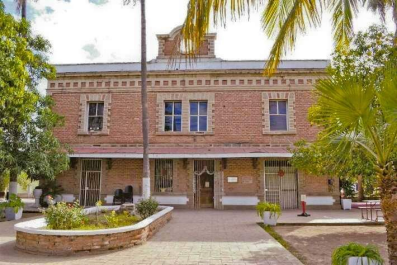
The indigenous Mayos ethnic group has been present in this region of the state of Sonora for several decades and generations, leaving such an important historical and cultural legacy for modern society that they have become an icon of the city.
Through its five exhibition rooms, the Regional Museum, which bears the name of its predecessor, Professor Lombardo Ríos Ramírez, houses an endless number of articles, which allow us to travel to the time of the region of May in prehistory, in the Revolution of Mexico and the most representative events of the twentieth century, in addition to the Yoreme culture.
The museum also has a room dedicated to temporary exhibitions, where national and some international samples arrive year after year. Here there are also special events dedicated to the dissemination of culture.
https://www.meganoticias.mx/obregon-navojoa/noticia/museo-regional-del-mayo-de-manteles-largos/85345
https://www.tuexperiencia.com/navojoa/excursion-en-el-museo-regional-del-mayo
Ecotourism
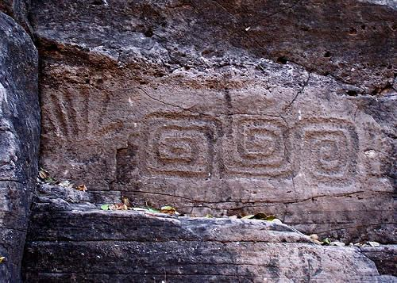
Partly because of the mountainous region, green terrain, hiking and mountain biking are popular pastimes in the region. Enjoy urban hiking in the town of Navojoa, or challenge yourself on the bike path near Alamos. A local ecotourism company, Lobos Aventurismo, offers free mountain biking classes to get you started.
Excursions are carried out on the Mayo River and in the Adolfo Ruíz Cortínez dam the activity is to navigate by kayak or boat, while in the mountains you can go hiking and birdwatching and exotic species, climb or rappel.
Kayaking and water sports are especially popular in the winter months when the Mayo River rises to levels that make boating and kayaking easier. Local ecotourism groups also organize trips to the nearby Sonoran coast for kayaking, fishing, and bird watching.
https://explore-sonora.com/grandes-cosas-para-disfrutar-en-navojoa
Tres Marías Hunting Ranch
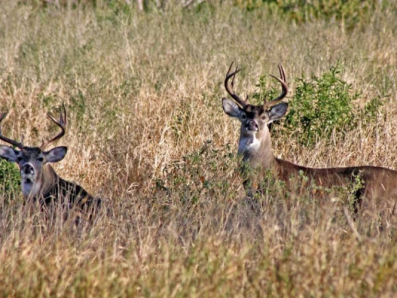
Rancho Tres Marías is located in the southern part of the state of Sonora, at the foot of the Sierra Madre Occidental. It is here where the Sonoran desert meets the lush forest of the state of Sinaloa. The ranch encompasses an area of 4,500 hectares (11,000 acres) which, due to the distribution of its terrain and vegetation, makes the natural habitat for the elusive White-tailed Deer Couesi, native to this region. We also have within the ranch a reserve of 800 hectares (1950 acres) under elevated fence with an attractive selection of exotic fauna.
The ranch has a colonial style house with 6 bedrooms with modern facilities. At the same time the service is limited to two couples and three hunters or six individual hunters. Accompanying persons are welcome to enjoy the relaxing atmosphere of our facilities, participate in the hunts, or pay a visit to the famous city of Alamos, which is located nearby. Founded in 1613 by the Spanish and twice the Mexican mint, today it is a mecca for historians and artists.
The professional chef prepares for your delight a varied menu of abundant Sonoran and international food.
http://www.3marias.com.mx/esp/index.html
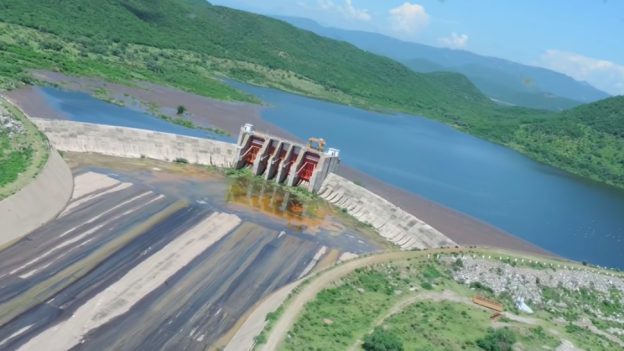
NAVOJOA Y SUS BELLEZAS
https://youtu.be/UIqvYKaWLJ4
6. History
Precolumbian era
The territory that currently occupies the municipality of Navojoa was occupied since pre-Hispanic times by Mayan Indians (originally they were called Yoreme), whose history is intimately linked to the valley and the river of the same name. The name of Navojoa comes from the May language from the roots "navo", nopal and "jova" casa; It therefore means "place, town or nopal house".
Mayan Indians
They were originally called Yoreme. The current Yoreme are the descendants of the ancient inhabitants of the Huatabampo culture, belonging to one of the cultural traditions of Sonora and Sinaloa. The group has a population of approximately 190,000 inhabitants according to 2011 statistics.
They call themselves yoreme "the one who respects the tradition" as opposed to the yori "the one who does not respect it." According to an old legend of its oral tradition, the word May means "the people of the riverbank."
The Mayo region is located in the southern part of Sonora. They inhabit the municipalities of Álamos, Quiriego, Navojoa, Etchojoa and Huatabampo. It is said that the Mayos have a common trunk with the Yaquis, because their language is part of the Taracahita family of the Aztec Uta trunk, with notable dialect similarities to the Yaqui language and the Guarijío language.
The story tells that the Mays were meekly recipients of the Spanish evangelizing teachings, at the same time acquiring knowledge regarding agriculture and the raising of domestic animals. With this acceptance, the settlers of the old May area were quickly assimilated to the customs of the time, with a gradual loss of their traditional social organization.
Their current home is built with adobe, block and / or brick, since these materials are more resistant to the torrential rains and cyclones that occur regularly in the region and consists of two or more bedroom rooms, a reed shed and a kitchen with wood stove next to it. In almost all the houses in May, it is constant to see a cross made from the heart of the mesquite tree or ironwood, which is placed in the patio or in front of the house to protect it from any evil.
Conquest and colony
On September 24, 1533, a new episode in the history of this region began, with the arrival of Diego de Guzmán, the first Spaniard to arrive in these lands. Three years later, the famous Spanish explorer Alvar Núñez Cabeza de Vaca, after being shipwrecked on an expedition to Florida, passed through this region, on his way to the capital of New Spain.
One of the first Jesuit missionaries to arrive in these lands was M.S.J. Pedro Méndez and his evangelizing work began in 1614.
The independence stage, due to its distance from the capital of the country, went unnoticed in this region; However, in the Mexican Revolution the inhabitants of this area were a key piece, with the participation of several generals, including General Álvaro Obregón, they fought valiantly. This was worth so that in the six-year term of General Lázaro Cárdenas del Río the distribution of land began and the modernization of the agricultural infrastructure of the Mayo Valley began.
7. Contact Information

City Mayor: María del Rosario Quintero Borbón
Phone number: +52 (642) 425 6302
Twitter: https://twitter.com/NavojoaGob
E-mail: presidencia@navojoa.gob.mx
Website: https://navojoa.gob.mx
Govt. Office Address: No Reelección y Plaza 5 de Mayo, Navojoa, Son.
